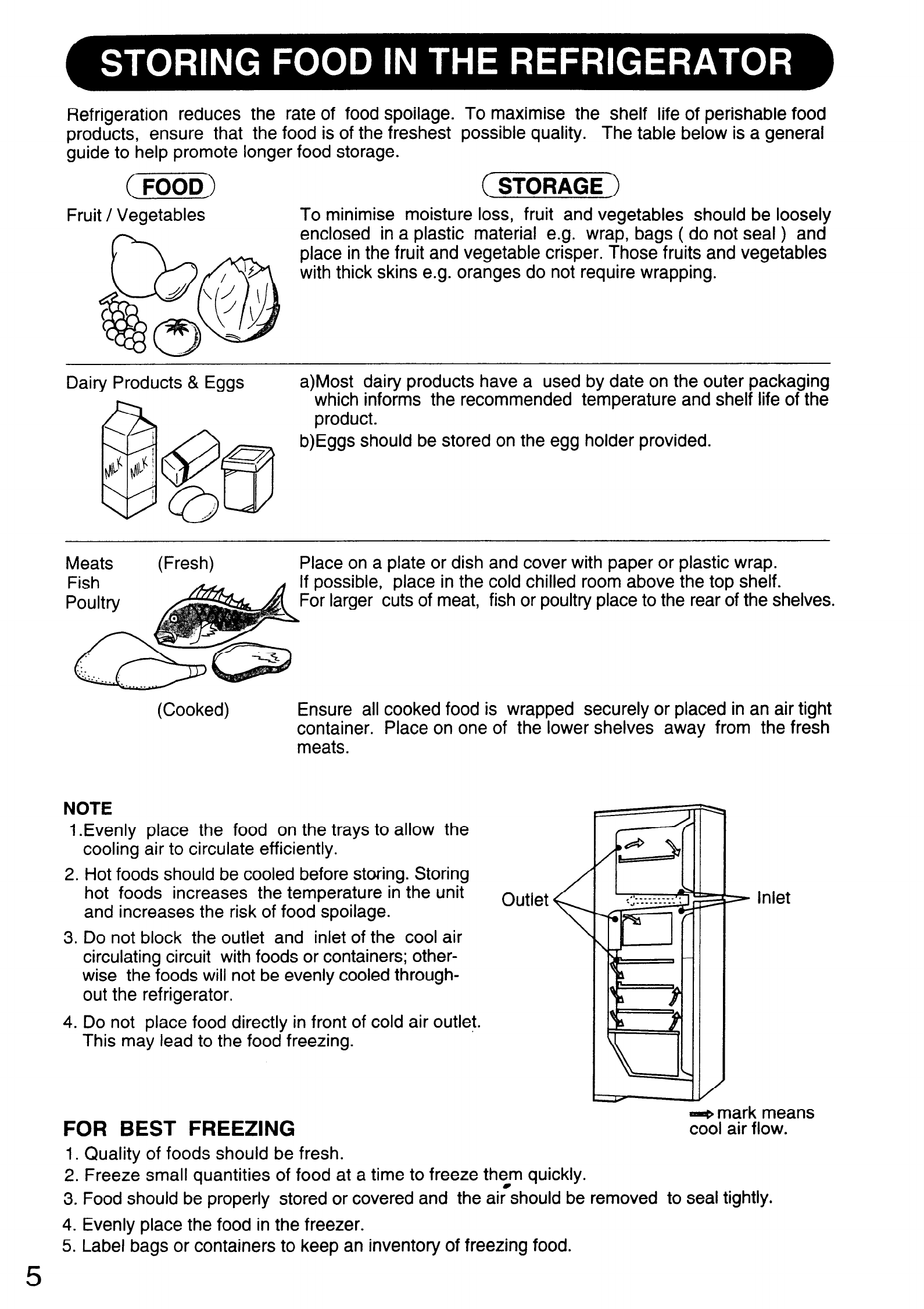
Refrigeration reduces the rate of food spoilage. To maximise the shelf life of perishable food
products, ensure that the food is of the freshest possible quality.
The table below is a general
guide to help promote longer food storage.
(?66i@
(STORAGE)
Fruit / Vegetables
To minimise moisture loss, fruit and vegetables should be loosely
enclosed in a plastic material e.g. wrap, bags ( do not seal ) and
place in the fruit and vegetable crisper. Those fruits and vegetables
with thick skins e.g. oranges do not require wrapping.
Dairy Products & Eggs
a)Most dairy products have a used by date on the outer packaging
which informs the recommended temperature and shelf life of the
product.
b)Eggs should be stored on the egg holder provided.
Meats
(Fresh)
Place on a plate or dish and cover with paper or plastic wrap.
Fish
If possible, place in the cold chilled room above the top shelf.
For larger cuts of meat, fish or poultry place to the rear of the shelves.
(Cooked)
Ensure all cooked food is wrapped securely or placed in an air tight
container. Place on one of the lower shelves away from the fresh
meats.
NOTE
1 .Evenly place the food on the trays to allow the
I
2.
3.
4.
cooling air to circulate efficiently.
Hot foods should be cooled before storing. Storing
hot foods increases the temperature in the unit
and increases the risk of food spoilage.
Do not block the outlet and inlet of the cool air
circulating circuit with foods or containers; other-
wise the foods will not be evenly cooled through-
out the refrigerator.
Do not place food directly in front of cold air outlet.
This may lead to the food freezing.
FOR BEST FREEZING
1.
2.
3.
4.
5.
5
Outlet
6
/
7 Inlet
=-+ mark means
cool air flow.
Quality of foods should be fresh.
Freeze small quantities of food at a time to freeze them quickly.
Food should be properly stored or covered and the air should be removed to seal tightly.
Evenly place the food in the freezer.
Label bags or containers to keep an inventory of freezing food.








